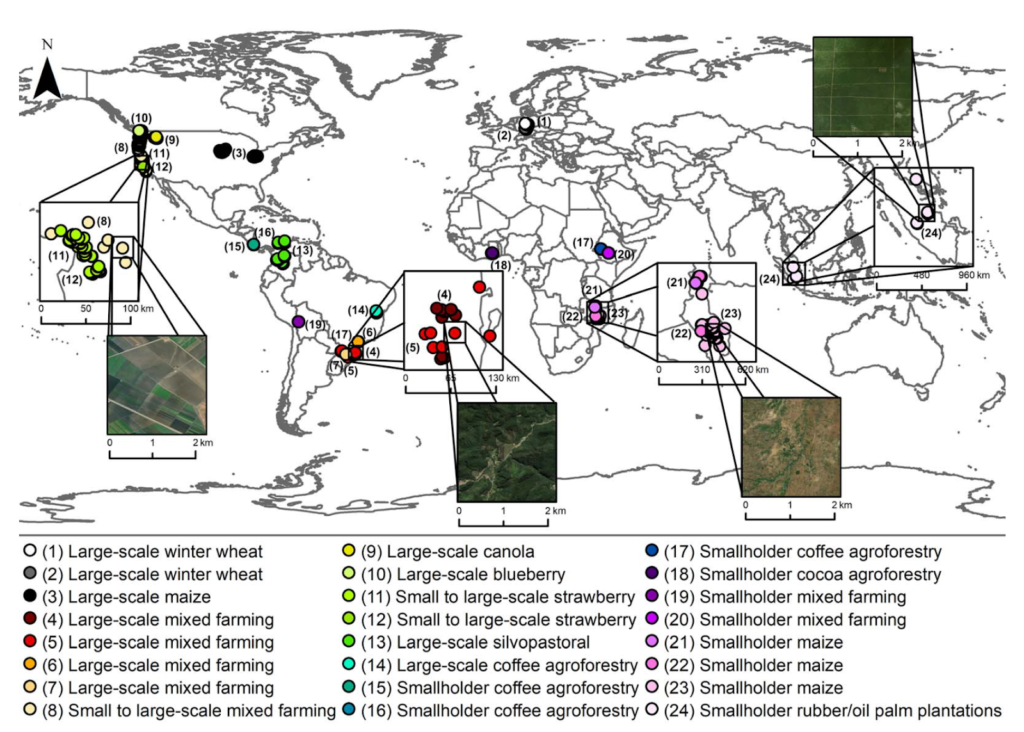
A diversified strawberry farm in California. Photo credit: Claire Kremen.
Bio-diverse agricultural systems that intentionally include multiple species offer myriad benefits, including more efficient and sustainable food production, improved outcomes for biodiversity conservation, and reduced vulnerability to climate change. Most studies that assess diversification practices- such as integrating livestock, incorporating cover crops, and planting hedgerows- document environmental benefits, while social and economic outcomes are less commonly measured. Scaling up diversification practices offers a promising solution, but must be informed by an understanding of trade-offs between environmental outcomes. Agricultural diversification is often touted as being good for biodiversity, but has also been accused of being associated with lower crop yields, yet findings from a new study in Science challenge this assumption.
In a massive new analysis, researchers found that diversification practices are associated with few negatives, and the more diversification practices that are used, the better, especially when it comes to biodiversity and food security. In contrasts to many global meta-analyses, this new study represents a large-scale collaboration across 58 global researchers who helped to ensure that results from the agricultural systems where they work were accurately represented in the study. Using 24 studies from 11 countries and 2,655 farms, researchers found that people and the environment both benefit from diversified farming.
As the lead author Laura Vang Rasmussen from the University of Copenhagen puts it, “Drop monoculture and industrial thinking and diversify the way you farm – it pays off.” Across all datasets, the authors found that applying more diversification strategies improved both biodiversity and food security, without sacrificing crop yields. These findings suggest that increased investments in incentivizing farmers to adopt diversification strategies, from government agencies and the private sector, could have a large impact on increasing agricultural sustainability and planetary health.

Distribution of 24 datasets representing 2,655 farms included in the analysis. Inset maps are satellite images of agricultural systems, from left to right: leafy greens in the US West Coast, mixed farming in Brazil, smallholder maize in Malawi, and oil palm plantations in Indonesia. Colored circles represent individual farms.

